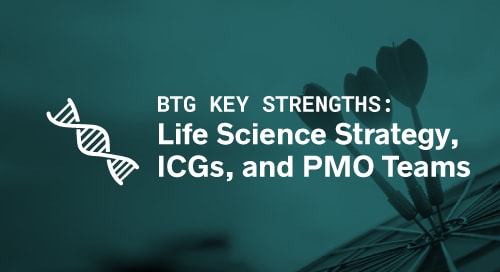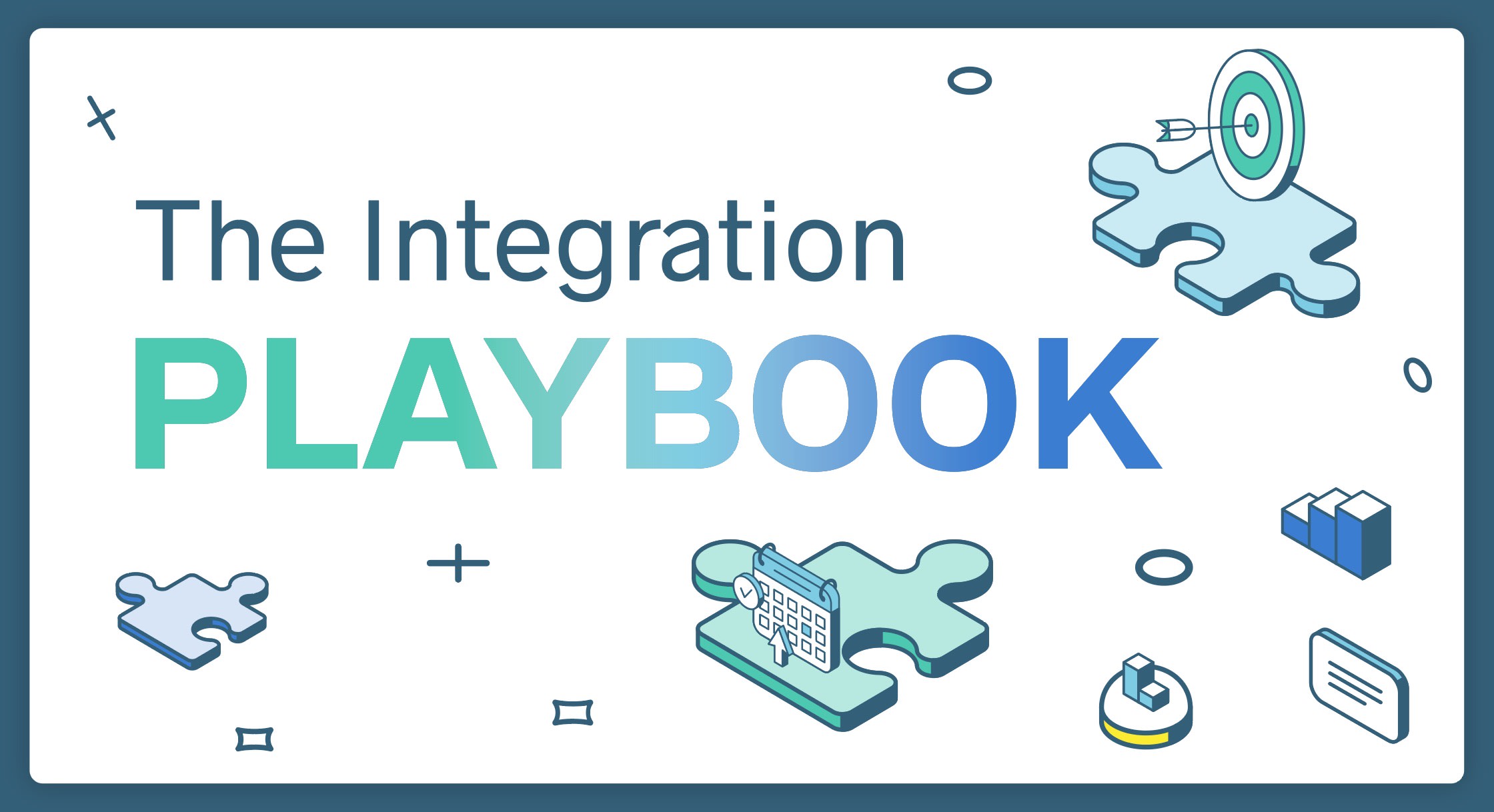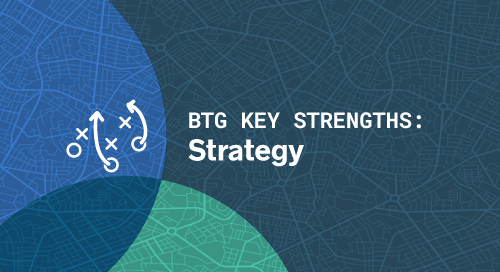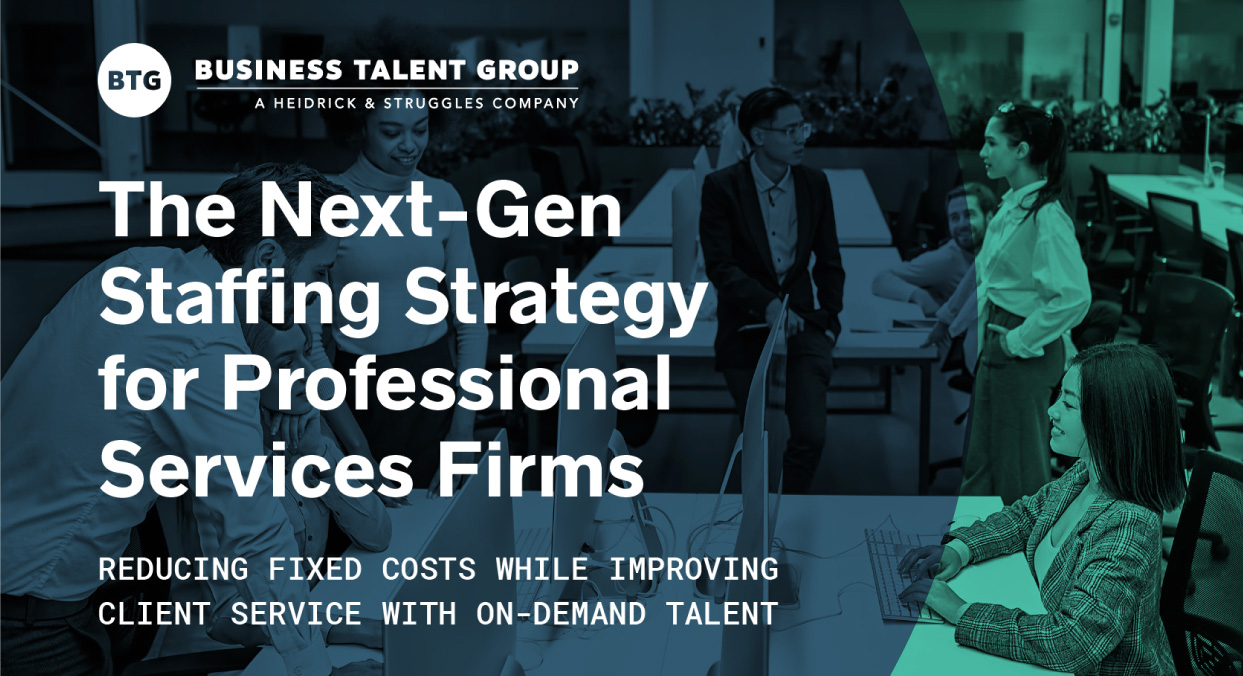

Internal consulting groups have become very popular at the world’s biggest companies, supplementing and even replacing teams from Big Three firms to solve critical issues, oversee transformations, and execute new initiatives.
Few execs have a clearer view of the trend than Business Talent Group client Dan Lee, who built an internal consulting group at Pfizer known as the Consulting and Execution Group, or PCE. PCE served the company on complex strategic and operational projects—yielding, by Lee’s calculation, over $750 million of incremental revenue on an annual basis and over $1.6 billion of expenses reduced annually.
In our latest Expert Q&A, Lee shares best practices for building an internal consulting group—and how independent consultants played a crucial role in helping PCE successfully serve internal clients.
In 2011, you formed PCE, an internal consulting group dedicated to serving the company on complex strategic and operational projects. And yet you have no formal background in consulting. What’s the story of PCE?
Over the course of my career at Pfizer, I worked with management consultants from many big firms, including McKinsey, BCG, Deloitte, Booz, and others. These engagements were across a wide spectrum of project types. In my experience, the firms were invaluable on some engagements, and we were much better off having engaged them, even if it was expensive.
However, on numerous occasions, the engagements were frustrating—consultants would take up my time and my data, and after synthesizing everything, I’d receive a deck late the night before a major readout and it’d be clearly not up to par. On more than one occasion, my team and I were up all night redoing the work. A few weeks later, I’d receive an invoice, and I thought there had to be a better way. And unfortunately, my experiences were not an isolated incident, but shared by others in the company.
So when I was asked to take over and evaluate a struggling Six Sigma group that was underperforming, I had an idea: “What if we use the budget to create an internal management consulting group with employees who know our company culture and truly understand the business, but have many of the skills and capabilities you see from strong consultants? And what if we focused on high-impact strategic projects, working on both the upfront strategic aspects and guiding the implementation of any solutions? Could we do better quality work and drive true sustainable business impact vs. conceptual recommendations that sat on a shelf? And that’s how PCE was born, starting with about 15 people.
By the time you left Pfizer, PCE had grown to over 75 employees. Can you talk about the path from seeing the opportunity to building the group and making it work for the company?
When starting a new internal consulting group, your reputation is paramount, as your clients are all in the same company and frequently speak to each other. So it was crucial for us to quickly demonstrate the value we could bring. We focused on quantifiable quick wins, predominately high-impact projects driving incremental P&L. It had to be incremental P&L impact and not already baked into someone’s budget since we wanted to move the P&L in a meaningful way. This also meant that the leaders we worked with had to be willing to put the project results into their budget in the next budget cycle.
We also tracked the consulting fees we saved. How much would that leader have paid if the project had been done via a traditional consulting firm? A number of our projects went out for bid, so we had really good data in addition to the rate cards to determine how much money we saved the company by internalizing the work.
What types of projects were you doing?
We worked on what was most important for the company, since our sponsors tended to be the most senior leaders in the company. In the early days, Pfizer was going through sizable revenue loss with patents expiring, so much of the work was about reimagining how different parts of the business could operate more efficiently. As leaders began to shift focus to top-line growth, we began working on a lot of growth strategies, go-to-market models, geographical expansion along with R&D productivity, innovation initiatives, and figuring out how to leverage new digital and analytical capabilities and embed those into our business.
Focusing on impact really helps you prioritize, I imagine. Can you share some of the consulting savings and P&L impact that your group had?
Over an eight-year time frame, the projects yielded over $750 million of incremental revenue on an annual basis, and over $1.6 billion of expenses reduced annually. That’s roughly 25 to 26 cents of EPS impact, so a meaningful contribution to the enterprise.
That’s impressive.
It’s stunning what you can actually do, but it couldn’t have happened without a great team and the fact that we were set up to succeed within the company. I’m grateful for the Pfizer leaders who supported us, empowered us, and set us up for success.
How did you think about resourcing your own group?
Initially, we brought on board internal employees who brought great strengths in really understanding the business and demonstrating good project skills. Over time, we balanced that with more hires from consulting firms that focused on life sciences, who brought a strong consulting skillset and some knowledge of the business. Eventually, we built out our own training program, at which point we shifted to hiring more directly from schools, since we felt that if we could find the right people, we could train and mentor them in both the business and the consulting skillset.
We were very careful about how we scoped a project to pull together a team, and team members could, on occasion, also come from the client organization. In this manner, we also knew when we had gaps and what role and skills we needed to fill.
At that point, you would often turn to independent consultants and other external resources.
That’s right. For example, we might have had a gap for a change management expert, or an R&D project where we needed someone who understood pharmacovigilance and drug safety issues. What really helped when tapping into the gig economy was being deliberate when scoping a project and designing the team so that we knew what role and skills we needed before we started looking for people. That helped a lot, because when someone comes in from the outside, both they and the rest of the team need a good understanding of how they fit into the team.
Another aspect we were careful to consider was ensuring that the rest of the team could help the independent consultant quickly navigate through the company, since large organizations are naturally complex. In fact, there were many occasions where we would have had to turn away a project if not for the ability to augment with independent consultants.
How did you source independent talent?
We evaluated different vendors, and based on our volume, felt it would be appropriate to form relationships with three. Each firm brought something different to the table, and Business Talent Group was one of those firms.
What were the benefits to your group of working with independents?
One of the great strengths of the gig economy is the wide variety of skills and experiences in the market, so we usually could find someone with the business knowledge and skills we needed.
The second is the price relative to large consulting firms. When you first try to source independent consultants, it may feel like the prices are all over the place. That’s true, but as you learn the market, you’ll start to see consistency and get a sense of what is an appropriate price for different skills. In general, you get what you pay for.
Third is the flexibility of how you can plug independents into different team sizes and structures. Some traditional consulting firms will only work with you if you engage pre-defined teams, and your only decision is what size team to engage, but with independent talent, you can even find them on a part-time basis.
While there’s some great benefits, I will caution that to be successful you also have to invest in changing the way you work internally so that you set your independent talent up for success. I think often leaders don’t consider the importance of doing that.
How so?
As you can imagine, every company has a different culture and different complexity, particularly heavily matrixed organizations. Those factors can play heavily into what you are asking the independent consultant to do.
If it’s a fairly contained project, I think it’s safe to say that you could ask an experienced independent consultant to lead a project. However, on projects where you have to work extensively across a matrix, do a lot of stakeholder management and conflict resolution, and bring strong business knowledge, you’re probably better off having that independent consultant be part of an internal team so other team members can give guidance, counsel, and support around effectively navigating the organization and avoiding pitfalls.
So it’s not always as easy as plug-and-play. But if you’re thoughtful about how you do it, you can access a strong and wide talent pool and more flexible capabilities for your different projects.
This reminds me of the scoping point you made earlier—in particular, the need to identify both your skills gaps and the type of role that you need someone to perform.
Yeah. We figured it out the hard way. In truth, many people don’t know how to do it. What do you look for? How do you think about staffing? How do you pressure test it, and how do you flex when you realize the project’s shifting? Who has the right business knowledge depth? These are all questions you have to wrestle with when scoping and staffing a project.
How have your experiences at PCE shaped the way you think about the way companies harness and deploy talent?
There’s a real opportunity for life science companies to look at talent differently. Part of that is thinking through opportunities to projectize work. It also means expanding your thoughts about talent pools to include external resources—not in terms of specific suppliers, but in terms of the way the gig economy works.
And that’s a bit of a challenging concept, because when you’re inside a big company, the concept of a gig economy feels like this amorphous thing that’s out there, and you really don’t know how good the talent is or how to tap into it, at least not at a scale that’s efficient.
You might know one independent consultant or have a personal network of five or six people that you tap into. But if you understand the real power of the gig economy, it begins to reshape the way you think about your resourcing and talent strategy and what you do internally and externally to use it to your advantage.
GET THE SKILLS YOU NEED
Thousands of independent consultants, subject matter experts, project managers, and interim executives are ready to help address your biggest business opportunities.
About the Author
More Content by Leah Hoffmann






















